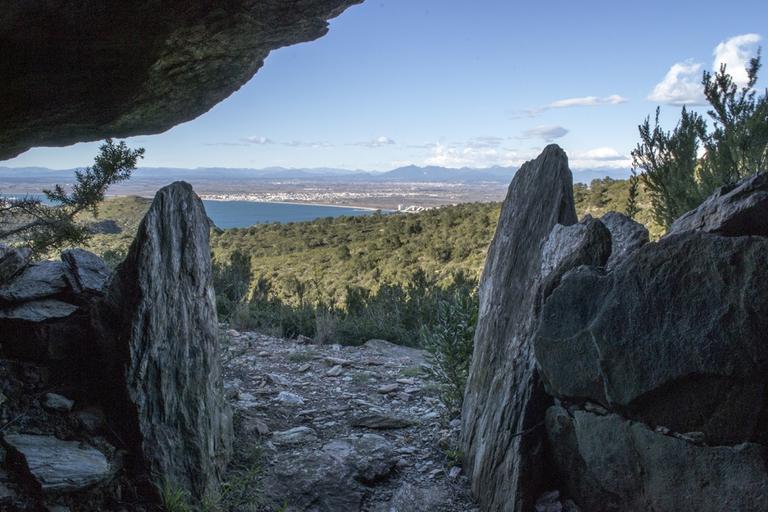
Introduction
Set of prehistoric carvings on a gneiss outcrop. On the first stone, there is a group of 11 single bowls, 9 bowls connected by an irrigation channel and 2 cruciform carvings, a Latin cross and the other with a barred base. On another stone, 200 metres to the east, there is an isolated engraving with an anthropomorphic figure. They were discovered by the geologist Carles Roqué. These type of engravings are an artistic manifestation of the megalithic culture and are made by direct percussion on rock. They are often found in the surroundings of dolmens and monuments of this prehistoric date.
The cave-dolmen is a megalithic tomb type that uses a natural cavity as a funeral chamber. The cave is closed on two sides, dry stone walls and a passage is built of gneiss slabs and with a mound in front. Several fragments of handmade ceramics were found that enabled it to be dated to the second half of the third millennium BCE and the enclosing walls were restored and the mound was reconstructed to reinforce the passage. The acidity of the soil means that there are no human remains in the chamber. These types of tomb, known as collective, are found within a context in which there is an increase in the demand for graves.